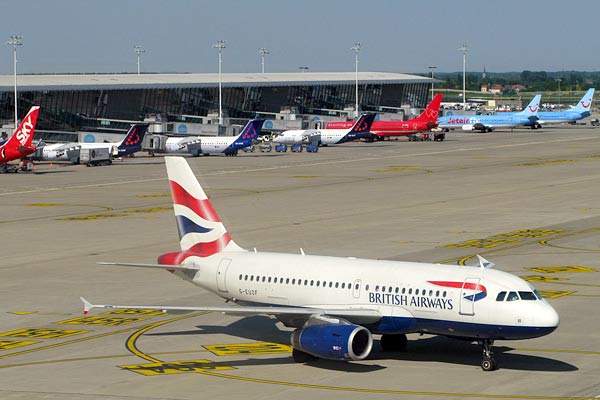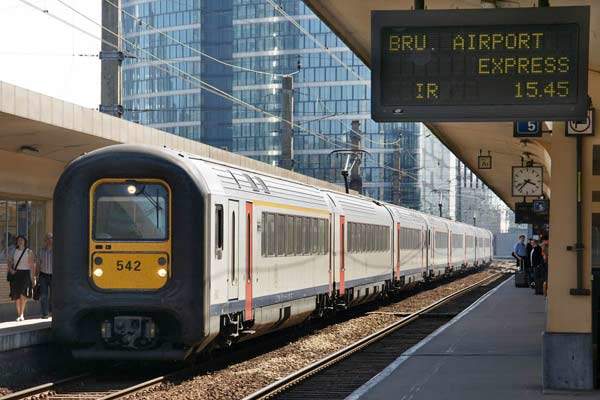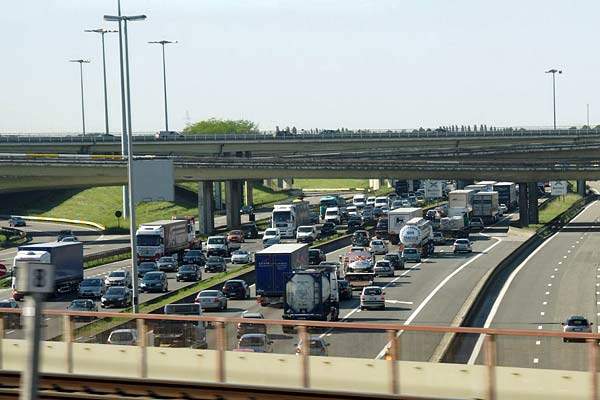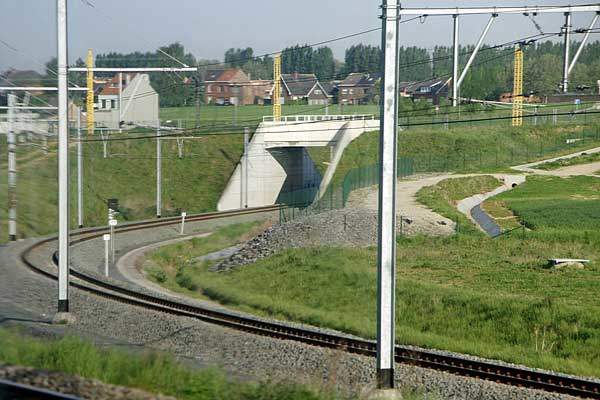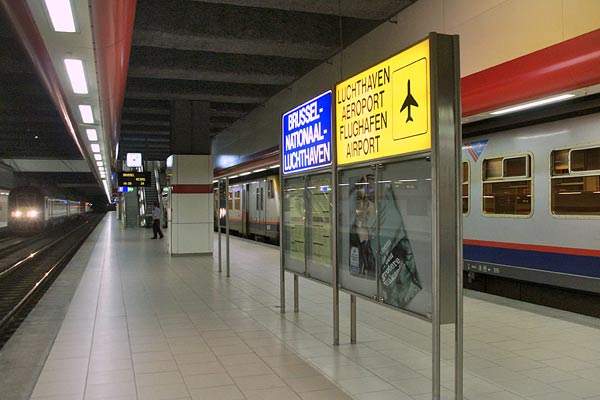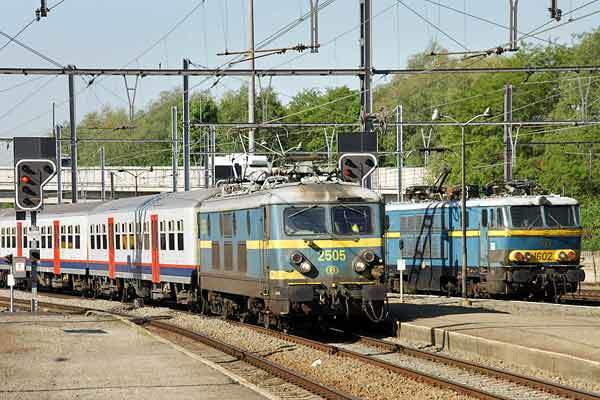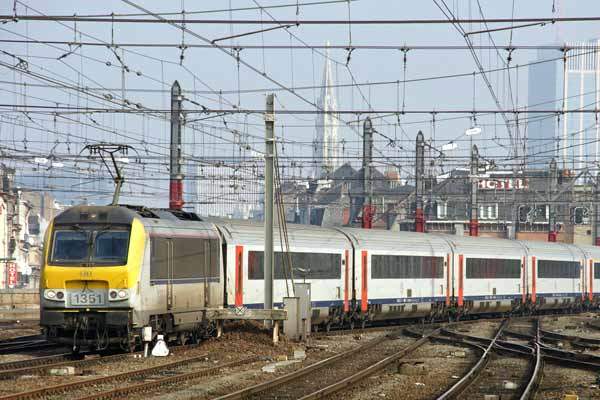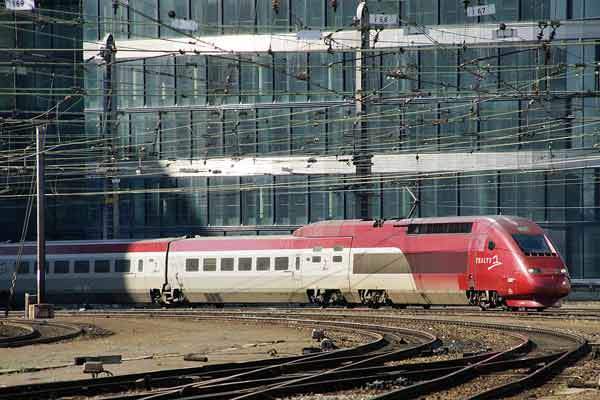Brussels is Belgium’s main concentration of the passenger rail traffic, with lines from most directions converging on the North-South Junction line, commissioned in 1952 to connect the capital’s rail services and principal stations.
Located at the north-eastern edge of the city, Brussels Airport (also known by the local Zaventem name and – as on railway signage – Brussels-National) was one of the earliest with a dedicated rail link, opened in 1955.
By 2000 the original station was replaced by a new three-platform terminus, built in conjunction with the new air terminal developments directly above, with which there are high capacity lift and escalator connections.
Rail service patterns have evolved from an initial shuttle from the city centre to including extensions of routes from around the country, broadly providing a non-clock face frequency of about four per hour.
THE PROJECT
The Diabolo Project is so-named because of the outline shape of two triangular junctions either side of the narrow connection at the airport station, resembling that of the string-spun top. With similarities to the development of Amsterdam Schiphol Airport station, the basis of the project as envisaged several years previously is to make Brussels Airport a fully integrated part of the national rail network.
By turning the terminus into a through route and realigning services, the objective is increase the proportion of passengers and workers (of which there is a near equal split of those travelling to and from the airport) using rail and other public transport.
Although passenger numbers on airport trains have gradually risen (by 30%, 2002–2006), for the same period bus use increased six-fold. With a comprehensive toll-free national motorway network and the airport being alongside Brussels’ northern motorway ring, the temptation for air passengers to use roads is high, even in the face of frequent standstills caused by traffic levels.
With recovery following a downturn triggered by the collapse of national carrier Sabena in 2001, airport operators are keen to maintain the attractiveness of Brussels as a continental hub (logo strap-line – Welcome to Europe). The Diabolo Project sits in the context of encouraging Brussels’ standing in civil aviation and the promotion of rail use.
Illustrative of present limitations is that second city Antwerp constitutes just over 10% of the airport’s catchment, yet rail users from there must journey south to Brussels Nord before they can set back in virtually the same direction to the airport.
INFRASTRUCTURE
There are two aspects of the Diabolo Project, both relating to a 2015 target that 40% of airport journeys will be by rail.
Some elements are already in place, including from 2006 the four-track alignment of Line 36 (Brussels-Leuven/Liège) and the east-facing Nossegem Curve (chord) onto that line from the airport opened in late 2005.
The present three-platform layout is being retained, but will be extended to accommodate longer trains such as SNCB’s Inter-City formations.
A 300m cross-over chamber and two 7.3m-diameter single-track bored tunnels will extend to the north-west beneath a runway and the Brucargo freight zone.
Totalling just under 3km, the lines will be fitted with unballasted track leading to grade-separated junctions connecting with both directions of a new line.
Designated 25N and built for 220km/h (137mph) operation, the ballasted twin-track 35km line will be from Schaerbeek in northern Brussels to Zemst where it will rejoin the alignment of the present route south of Mechelen.
It will make use of a 40m-wide central reservation of the E19 motorway formation that was originally envisaged for carriageway expansion. Under a separate project, the operational bottleneck of the Mechelen station area will be by-passed by a new line and station to the east of the city.
SNCB Group infrastructure body Infrabel will fund the Line 25N project. Northern Diabolo NV, a specially constituted PPP body, involving Babcock & Brown and HSH Nordbank will finance and build the airport section over five years, thereafter operating under a 35-year contract.
Consortium THV Dialink has been awarded the tunnel construction contract. Reward for the investment will be via a combination of fixed fees, a levy on airport rail tickets (for which there will be a staff exemption) and a contribution from operators of domestic rail services. The property will pass to Infrabel in 2047.
ROLLING STOCK
Rolling stock using the new lines will be those as per the electrified SNCB/NMBS services in general, thus a mix of multiple units, hauled and push-push formations.
The lines’ configuration would allow for Amsterdam-Brussels-Paris Thalys and, by the time of the opening, the NS Hispeed trains to serve the airport, although no announcements have been made that effect.
SIGNALLING AND COMMUNICATIONS
The lines will be signalled as per the main Belgian network. Compatible with operation by international high-speed trains and domestic services, TBL1+ and ETCS Level 1 is being widely installed.
THE FUTURE
It is possible that another Brussels-based project, the RER (urban regional rail network) will be incorporated into the Diabolo infrastructure, thus stock ordered from Siemens in March 2008 is likely to become deployed there.
There will also be more services routed to the airport via the ‘European Quarter’ – the EC administrative area around the Schumann Metro and SNCB station – as opposed to solely via the North-South Junction line as at present. Construction and equipping the Diabolo and Line 25N is projected to be complete by 2011, with services commencing in the following year.

